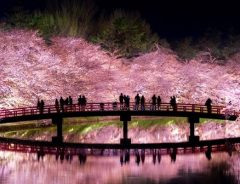- Tags:
- cherry blossom viewing / Japanese castles / Sakura
Related Article
-

Starbucks Japan celebrates sakura season with a full bloom cherry blossom berry Frappuccino
-

Botanist Tokyo’s Spring Sakura Menu Includes Pink Hot Chocolate and Pink Vegan Carbonara
-

Cherry Blossom-Themed Airbnb Apartment Opens in Harajuku, First Offering From MOSHI MOSHI ROOMS
-

Take the cherry blossom parties to your home with sakura scented mosquito repellent incense
-

This Photographer Shows How Truly Magical Nighttime Cherry Blossoms Are
-

Shake Shack Japan Releases New “Shackura” Cherry Blossom Shakes



By Galileo Ferrari, JAPAN Forward
Japan’s castles are very popular for both inbound and outbound travelers as a source of relics of the past for each region, especially during the cherry blossom season.
School trips, tour groups, history lovers, culture and traditional fans all find different reasons to visit throughout the year. But what of their origins?
The history of castle origins in Japan dates back to the 15th century Sengoku-jidai (era of warring states). The central government’s power had weakened, and the smaller independent battling states rivaled each other, constructing castles on hilltops and mountains as a strategic defensive ploy.
In the latter half of the 16th century, when Japan had formed somewhat of a reunification, larger castles, built on a plan or small hills, became each region’s headquarters or town center. Many of these later became known as “castle towns.”
Several of the original castles survive today. Others succumbed to further government changes, the unpopularity of their existence, and the aftermath of World War II.
Fortunately, several of those damaged or destroyed have been reconstructed. Moreover, in many cases, renovations adapted the historic properties to technological advances in architecture, replacing primitive materials with modern solutions such as concrete and steel.
The sakura season is a great time to explore these historic sites. Here are five castles where you can enjoy o-hanami every spring.
© JAPAN Forward
Osaka Castle (Osaka)
Built in 1583, and arguably Osaka’s most important landmark, the iconic main tower was reconstructed only in 1931. The sakura matsuri starts as early as the second to last weekend of March and runs until the second week of April.
(...)
Written by Japan ForwardThe continuation of this article can be read on the "Japan Forward" site.
These Japanese Castles are Best for Sakura Viewing